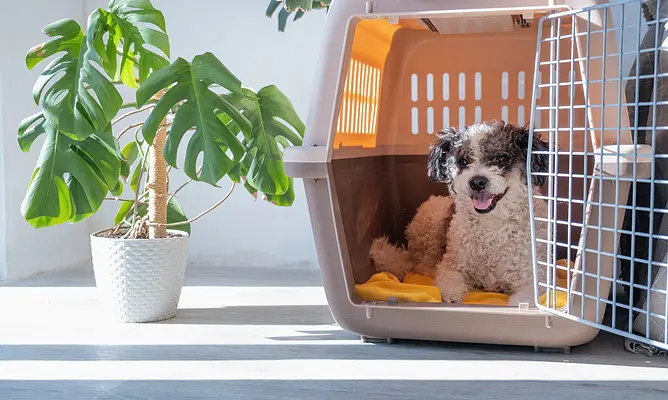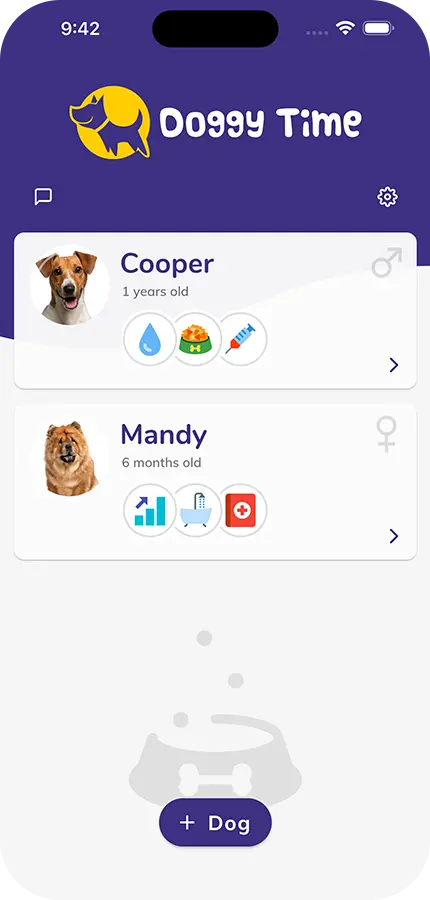If you're reading this, chances are you're either welcoming a new puppy into your home or looking to improve your current crate training routine. First off, congratulations on taking this important step! Crate training, when done correctly, is one of the most loving gifts you can give your dog – it provides them with a safe, secure space that becomes their personal sanctuary.
Let me share with you the gentle, effective approach to crate training that will have your pup viewing their crate as their favorite spot in the house, not a punishment.
Why Crate Training is Actually a Gift of Love
Before we dive into the how-to, let's talk about why crate training is so beneficial. Dogs are naturally den animals – they crave a cozy, enclosed space where they can feel completely safe. A properly introduced crate becomes:
- A safe haven during thunderstorms, fireworks, or when feeling overwhelmed
- A travel companion that makes car rides and vet visits less stressful
- A potty training tool that works with your dog's natural instincts
- A boundary setter that prevents destructive behavior when you're away
- A recovery space if your pup ever needs medical rest
The Golden Rules: Crate Training Dos
1. Choose the Right Size Crate
Your dog should be able to stand up, turn around, and lie down comfortably. For puppies, consider a crate with a divider so you can adjust the space as they grow. Too big, and they might use one end as a bathroom; too small, and they'll feel cramped and anxious.
2. Make It Irresistibly Cozy
Transform that crate into a five-star hotel! Add: - A comfortable bed or blanket with your scent - A favorite toy or two - A water bowl (for longer stays) - Maybe even a piece of your clothing for comfort
3. Start with Baby Steps
Never just shove your dog in and close the door. Instead: - Feed meals near the crate, gradually moving the bowl inside - Toss treats inside while saying "crate" or "bed" - Let them explore with the door open - Practice short sessions with the door closed while you're home
4. Use Positive Associations
Make the crate the place where good things happen: - Special treats that only come out during crate time - Puzzle toys or Kong toys stuffed with goodies - Calm, happy praise when they go in willingly
5. Establish a Routine
Dogs thrive on predictability. Use the crate at consistent times like: - Naptime (yes, adult dogs need naps too!) - When you're eating dinner - During your work-from-home focused hours - Bedtime, if that works for your family
The Never-Do List: Crate Training Don'ts
1. Never Use the Crate as Punishment
This is the fastest way to create negative associations. The crate should never be where your dog goes when they're "bad." It's their safe space, not doggy jail.
2. Don't Rush the Process
Some dogs take to crates immediately; others need weeks or even months. Pushing too fast can create anxiety and setbacks. Let your dog set the pace.
3. Never Leave Them Too Long
(We'll cover specific time limits below, but this is crucial enough to mention twice!)
4. Don't Give In to Whining... Usually
If you know your dog's needs are met (potty, water, comfort), don't immediately let them out when they whine. However, always trust your instincts – sometimes whining means they genuinely need something.
5. Don't Crate a Sick Dog
If your pup is unwell, especially with stomach issues, crating can be stressful and impractical.
Time Limits: How Long is Too Long?
This is where many well-meaning pet parents go wrong. Here are the general guidelines:
Puppies (Under 6 Months)
- 8-10 weeks: 30-60 minutes maximum
- 11-14 weeks: 1-3 hours maximum
- 15-16 weeks: 3-4 hours maximum
- 17+ weeks: 4-5 hours maximum
Adult Dogs (6+ Months)
- Maximum: 6-8 hours (like a work day)
- Ideal: 4-6 hours with breaks
Senior Dogs
- Often need more frequent potty breaks
- May have joint issues that make long crating uncomfortable
- Generally 4-6 hours maximum
Remember: These are maximums, not goals! Shorter periods are always better when possible.
Special Situations and Troubleshooting
The Anxious Crate-Hater
Some dogs have had negative experiences or are naturally more anxious. For these sweet souls: - Go extra slow with introduction - Consider an exercise pen instead of a closed crate initially - Use calming aids like pheromone sprays - Consult a professional trainer if needed
The Escape Artist
If your dog is breaking out of their crate: - Ensure it's the right size and properly secured - Check that they're getting enough exercise and mental stimulation - Consider if they're being crated too long - Rule out separation anxiety
Nighttime Crating
Many families successfully crate their dogs at night. Tips for success: - Place the crate in your bedroom initially for comfort - Ensure a final potty break before bed - Consider a nighttime water source for longer sleepers
Making Crate Time Even Better
Exercise First
A tired dog is a content dog. Make sure your pup has had adequate physical and mental exercise before crate time.
Create Positive Departure Routines
Don't make a big fuss when leaving or returning. Keep it calm and matter-of-fact.
Consider Background Noise
Some dogs find soft music or white noise comforting when crated.
When to Seek Help
Don't hesitate to consult a professional dog trainer or veterinarian if: - Your dog shows signs of severe anxiety or panic - They're injuring themselves trying to escape - You're not seeing progress after several weeks of consistent training - You have concerns about your specific dog's needs
Health Disclaimer: The information provided in this blog post is for educational purposes only and should not replace professional veterinary advice. Always consult with your veterinarian regarding your dog's specific health and behavioral needs, especially if your dog shows signs of anxiety, illness, or distress during crate training.
Track Your Success with Doggy Time
Crate training success comes from consistency and patience – and that's where tracking becomes invaluable! Consider using the Doggy Time app to help you and your family stay on top of your pup's crate training journey.
With Doggy Time, you can: - Log crate training sessions and track progress over time - Set smart reminders for crate breaks and potty time - Collaborate with family members so everyone stays consistent with the routine - Schedule training activities and monitor your pup's daily habits - Track potty breaks to establish the perfect crating schedule
The app serves as your complete puppy training assistant, daily activity tracker, and training diary all in one. When everyone in the household can see when the last crate session happened or when the next potty break is due, your pup gets the consistency they need to succeed.
Remember, every dog is unique, and what works for one might need tweaking for another. Be patient, stay consistent, and celebrate the small victories along the way. Before you know it, you'll find your furry friend voluntarily heading to their crate for afternoon naps – and that's when you'll know you've truly succeeded in creating their perfect safe haven.
Happy crate training! 🐾






